Japanese anemones (Anemone hupehensis, Anemone x hybrida, and Anemone tomentosa) are a stunning, elegant addition to late-season gardens. Known for their tall stems, delicate blooms, and graceful presence, these flowers bring a soft, airy beauty to gardens from late summer through fall. If you have been looking to create a more whimsical aesthetic in your garden, keep reading to learn all about this flower!
What Do Japanese Anemones Look Like?

Japanese anemones are instantly recognizable for their tall, elegant stems and delicate blooms that gently sway in the breeze. The flowers typically measure about 2 to 3 inches in diameter, with five to ten petal-like sepals that can be single, semi-double, or double, depending on the variety. Their color range spans from pure white and soft pinks to rich purples, and each bloom features a contrasting center with a ring of golden stamens surrounding a greenish-yellow cone.
The plant’s foliage is equally attractive, with dark green, deeply lobed leaves that form a dense, low-growing mound, contrasting beautifully with the tall, slender flower stalks that rise above it. Japanese anemones can grow to heights of 2 to 4 feet, making them ideal for the back of borders, where their height and gentle movement can add depth and interest.
Key Identifiers:
- Tall, slender stems with delicate blooms (2-3 inches in diameter)
- Blooms with 5-10 sepals in white, pink, or rose, featuring golden-yellow stamens
- Contrasting greenish-yellow cone in the flower center
- Lush, dark green, deeply lobed foliage that forms a dense mound
Popular Varieties Of Japanese Anemones
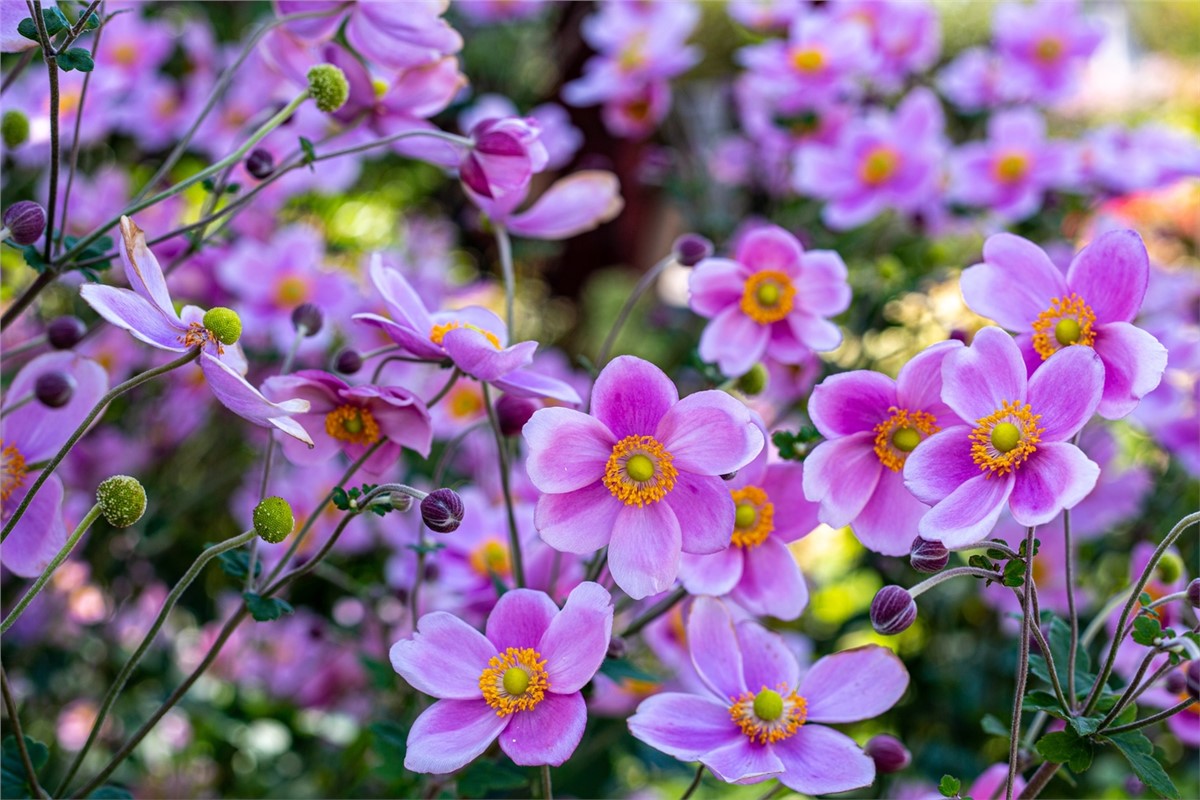
Several varieties of Japanese anemone offer unique color palettes and bloom shapes, allowing gardeners to find the perfect fit for their design preferences. Anemone hupehensis varieties like ‘September Charm’ are known for their soft pink, cup-shaped flowers that are perfect for adding a gentle pop of color to gardens.
Another popular type, Anemone x hybrida, includes beloved cultivars such as ‘Honorine Jobert,’ a pure white variety with a radiant golden center, and ‘Queen Charlotte,’ which features semi-double pink blooms. For a more vigorous and taller option, Anemone tomentosa ‘Robustissima’ is an excellent choice, with pale pink flowers and excellent cold tolerance, making it well-suited for colder climates.
Common Varieties:
- Anemone hupehensis ‘September Charm’: Soft pink, cup-shaped blooms, ideal for softer garden palettes
- Anemone x hybrida ‘Honorine Jobert’: Classic pure white flowers with a golden center, an award-winning cultivar
- Anemone x hybrida ‘Queen Charlotte’: Semi-double blooms in soft pink for a fuller look
- Anemone tomentosa ‘Robustissima’: Pale pink flowers on taller stems, cold-hardy and vigorous
When & Where To Grow Japanese Anemones
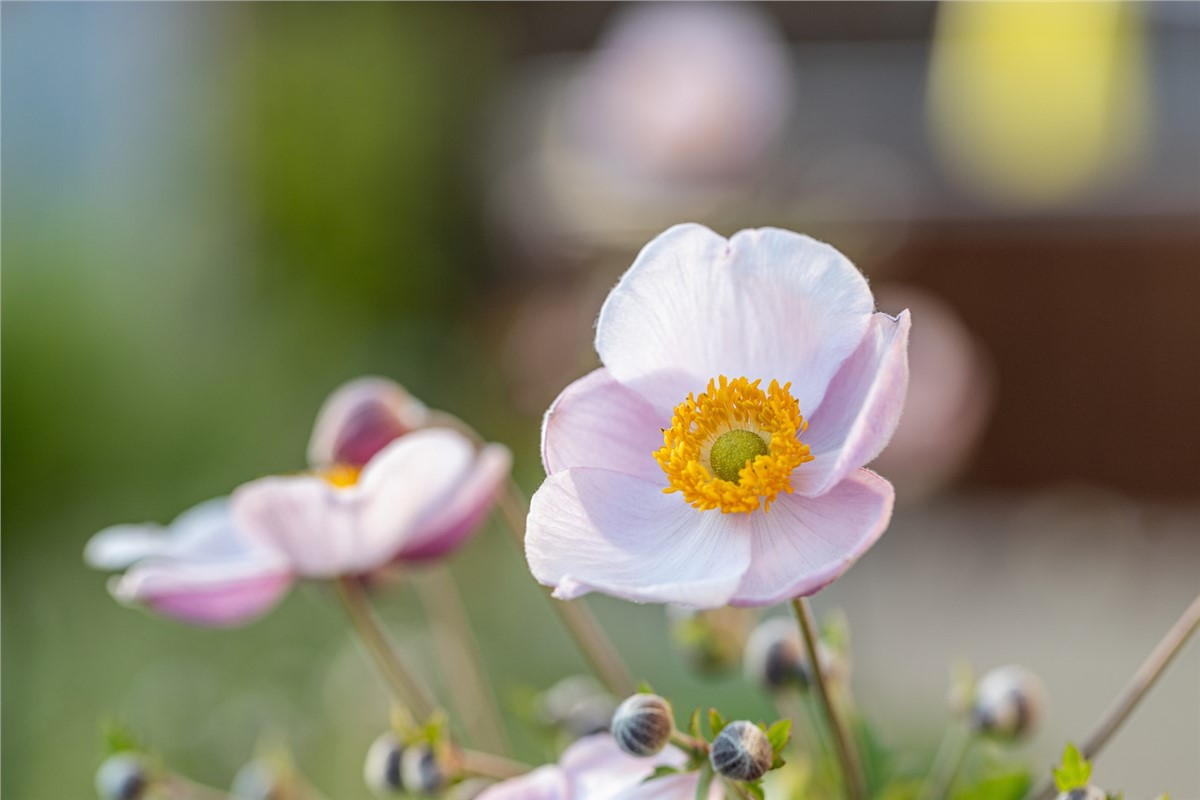
Japanese anemones are ideally suited for temperate climates and are hardy in USDA Zones 4–8, thriving in cool to moderate temperatures. They prefer partial shade, making them perfect for areas with dappled sunlight or morning sun and afternoon shade. These flowers are adaptable and can grow in full sun, but they perform best with some shade in hotter regions to prevent stress from excessive heat.
Japanese anemones are particularly valuable because they bloom from late summer into fall, a time when many other perennials have finished flowering. Their preference for moist, well-drained soil makes them ideal for woodland gardens, shaded borders, or mixed perennial beds.
Ideal Growing Conditions:
- USDA Zones 4–8 (best in temperate, cooler climates)
- Prefers partial shade or dappled sunlight; can tolerate full sun in cooler climates
- Thrives in moist, well-drained soil; amend soil with compost to improve moisture retention
- Blooms from late summer to fall, ideal for extending garden color in the cooler months
Life Cycle Of Japanese Anemones
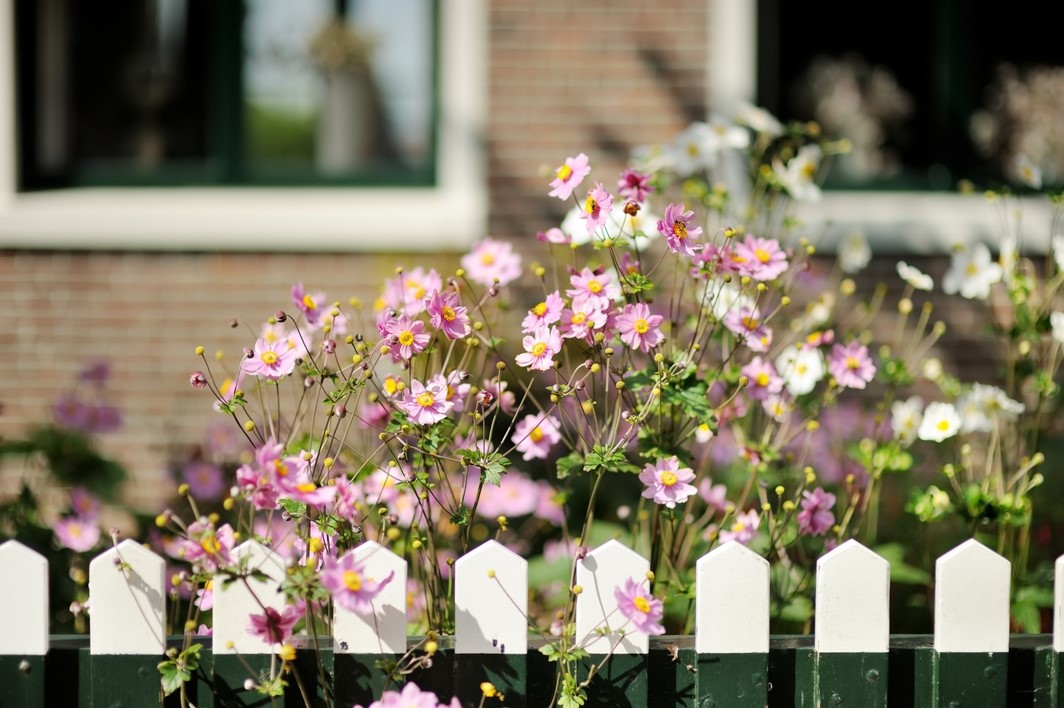
Spring
In early spring, Japanese anemones start to emerge from dormancy, with new foliage appearing as temperatures rise. This is an excellent time to clean up old leaves and add a layer of compost around the base to promote healthy growth. The foliage grows throughout spring and early summer, forming a lush, green mound that serves as the foundation for the taller flower stems.
Summer
By mid to late summer, tall flower stalks begin to rise above the foliage, leading to the first blooms in late summer. This is when Japanese anemones reach their peak, with flowers blooming continuously until early fall. During this period, the plant directs its energy into producing abundant flowers that sway gracefully on slender stems, attracting pollinators like bees.
Fall
In fall, Japanese anemones continue to bloom, often lasting until the first frost. After blooming, seed heads may develop, which can add interest to the garden even after the flowers fade. At this stage, the plant begins to wind down, preparing for dormancy. You can allow the seed heads to remain for winter interest or trim them back for a tidier appearance.
Winter
Japanese anemones enter dormancy during winter, with foliage dying back to ground level. At this stage, cut back the dead stems and leaves to tidy up the garden bed. A light layer of mulch can help insulate the roots, especially in colder zones. The plant will rest until spring, ready to emerge again with fresh growth.
How To Plant & Care For Japanese Anemones
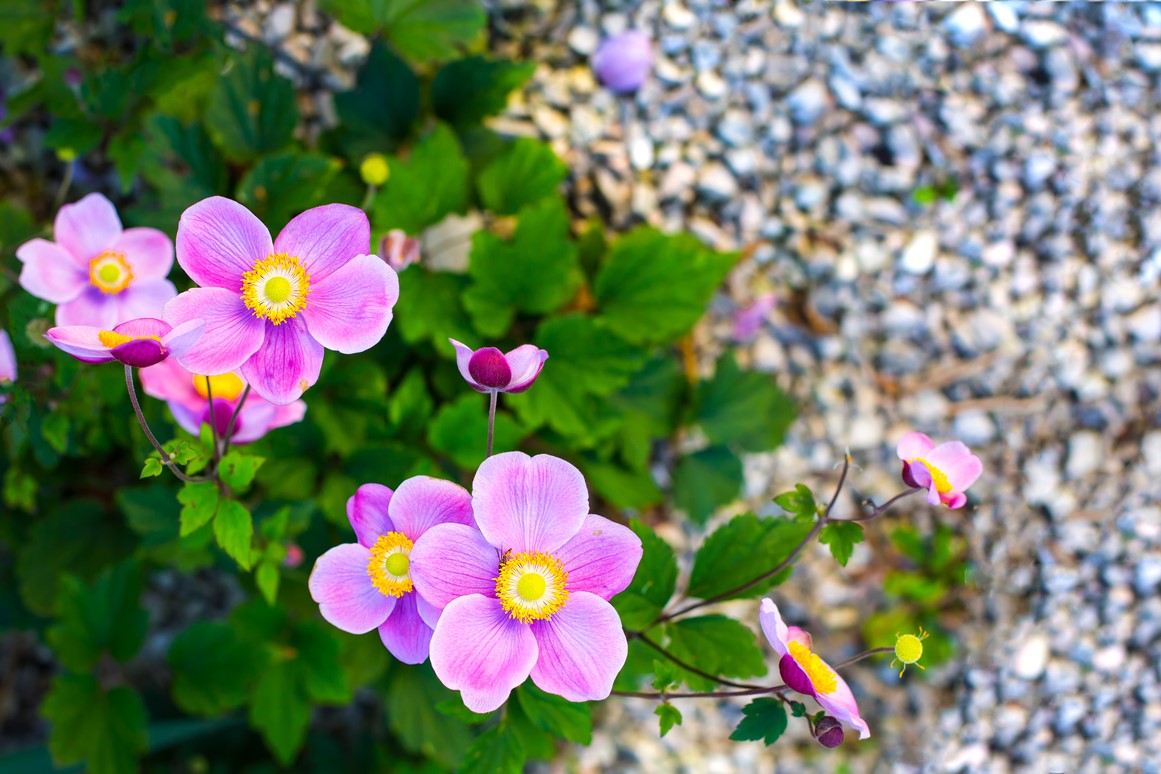
Japanese anemones are relatively low-maintenance but do benefit from the right planting and care to keep them thriving. They can be planted in spring or early fall, spaced about 1 to 2 feet apart to allow for their spread. For the best results, give Simple Lawns a call for all your gardening and landscaping needs in Washington this season. We will leave you with our top tips for taking care of these beautiful flowers.
Planting and Care Tips:
- Location: Choose a spot with partial shade and well-drained, humus-rich soil.
- Planting Depth: Plant root clumps or divisions at soil level, about 1–2 feet apart.
- Watering: Keep soil consistently moist but not soggy, especially during hot, dry periods.
- Mulching: Apply a layer of mulch in spring and fall to retain moisture and protect roots.
- Fertilizing: Use a balanced fertilizer in early spring to encourage growth; compost can also provide a natural nutrient boost.
- Staking: Taller varieties may benefit from staking to prevent stems from flopping over.
- Deadheading: Remove spent blooms to encourage new growth and prolong the flowering period.
- Winter Protection: Cut back dead foliage in late fall and apply a light layer of mulch to protect the roots in cold climates.
Subscribe to Simple Lawns's Blog





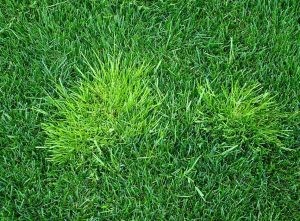
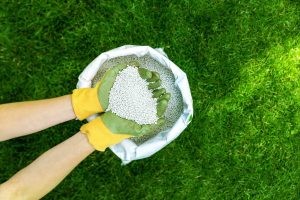


Comments